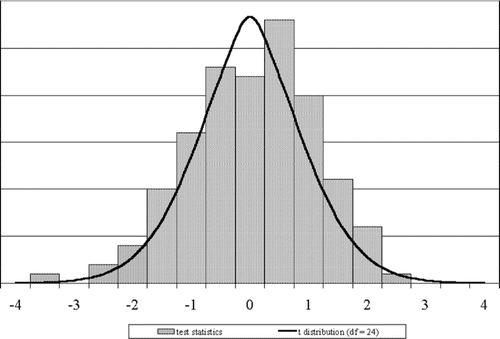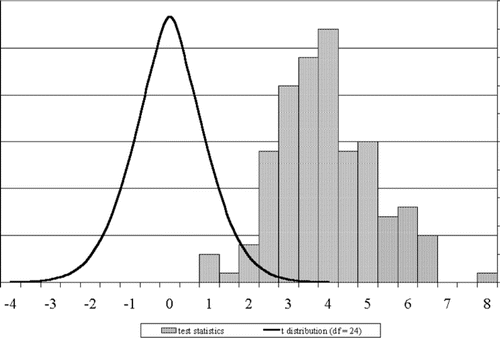Figures & data
Figure 1 Histogram of 144 students' test statistics , where
is the mean of n = 25 observations, pseudo-randomly generated from the normal distribution with mean μ = 135 and standard deviation σ = 20. Histogram is plotted against the t distribution with n − 1 = 24 degrees of freedom. Figure demonstrates the behavior of the test statistic when
, is true.

Figure 2 Histogram of 144 students' test statistics , where
is the mean of n = 25 observations, pseudo-randomly generated from the normal distribution with mean μ = 135 and standard deviation σ = 20. Histogram is plotted against the t distribution with n − 1 = 24 degrees of freedom. Figure demonstrates the behavior of the test statistic when
is false.


![Figure 4 at x = 40,000. (E[y | x = 40,000] = 10,000 − 0.10 (40,000) = 6,000).](/cms/asset/f4072ef5-48a2-4e3f-9c3a-ddb4c4c99d93/ujse_a_11910696_f0004_b.gif)